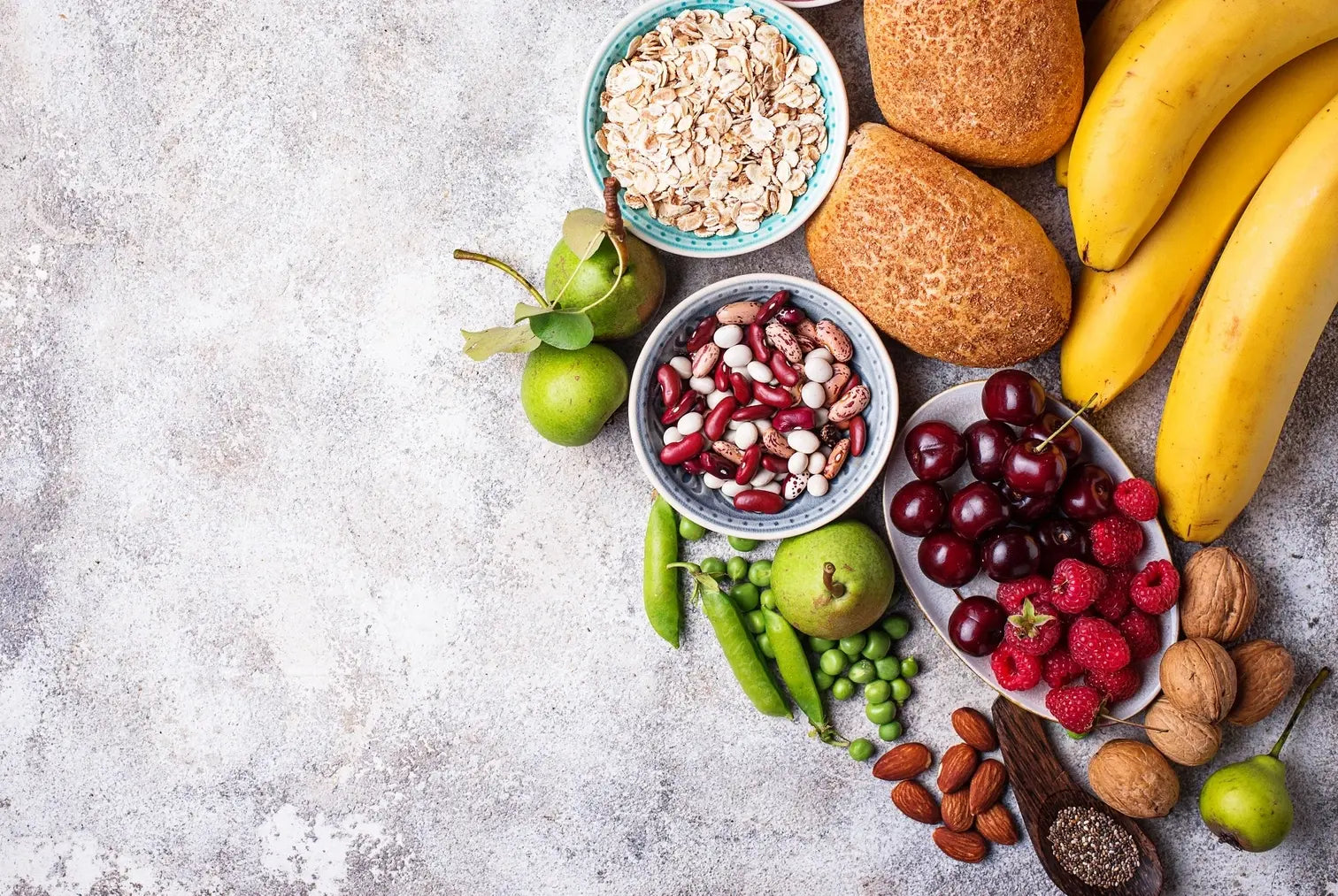What is the Gut Microbiome Diet?
The microbiome diet aims to improve your microbiome’s composition, diversity, and resilience through dietary phases. At its core, this diet is based on eating foods that boost gut bacteria, benefitting the diversity and composition of your gut microbes Avoiding artificial sweeteners, added sugar, and processed foods, which harm your microbiome, will help keep your gut microbiome healthy — which is instrumental to your overall health. This is because the gut microbiome has a far-reaching impact, affecting your digestion, metabolism, and even immune system.1 By following the steps set out by the microbiome diet, you may be able to heal your gut and reset your metabolism, giving you the energy you need every day while maintaining good gut health.
What Foods are Beneficial for Gut Microbiome?
- Include high-fiber foods like fruits, vegetables, legumes, and whole grains in your diet; they are rich in prebiotics that support the growth of beneficial bacteria.
-
Enhance your gut health with fermented foods such as yogurt, kefir, sauerkraut, kimchi, and kombucha, which are abundant in probiotics.
-
Opt for lean proteins like poultry and fish, along with plant-based proteins such as lentils and chickpeas, to promote gut health without the drawbacks associated with high-fat meats.
-
Integrate foods rich in polyphenols, found in dark chocolate, green tea, berries, and nuts, into your diet. These antioxidants reach the colon undigested, fostering the growth of beneficial bacteria.
-
Embrace omega-3 fatty acids from sources like fatty fish, flaxseeds, and chia seeds. Known for their anti-inflammatory properties, omega-3s contribute to maintaining a healthy gut lining, supporting overall gut health.

How to Follow the Microbiome Diet
Diet Phases
- Phase 1: This first phase lasts 21 days and aims to remove unhealthy gut bacteria from your gut and replace stomach acids and digestive enzymes for a healthy microbiome. This is regarded as the strictest of the three phases. In this phase, you are required to avoid a large variety of foods, including all grains, eggs, most legumes, dairy, and starchy fruits and vegetables. Likewise, heavily processed and fried foods, added sugar, artificial sweeteners, and some types of fats, fish, and meat are also recommended to avoid.
-
Phase 2: This second phase lasts about 28 days and allows you to add more flexibility to your diet, assuming your gut and microbiome have gotten stronger. You may reintroduce dairy, eggs, gluten-free grains, legumes, and most fruits and vegetables. During this phase, you still need to avoid the processed foods and items with added sugar mentioned above — but only 90% of the time.
-
Phase 3: This final phase is usually referred to as the maintenance phase, and it is expected to last until you decide to no longer continue with the diet. By this point, your gut and microbiome are believed to be operating at their maximal capacity. So, although the foods to avoid remain the same as in the first phase, you only need to do so 70% of the time.
Benefits of the Microbiome Diet
A gut health diet plan can improve digestive health, reduce the risk of chronic diseases like inflammatory bowel disease and heart disease, and better immune function
.3 Embracing a gut health diet plan has far-reaching benefits that extend beyond just digestive well-being as well. It can also contribute to healthier skin by addressing issues like acne, eczema, and psoriasis
.4 The intricate relationship between the gut and skin, known as the gut-skin axis, highlights the significance of maintaining gut health for promoting optimal skin conditions.
By nourishing the gut with a diverse range of nutrient-rich foods, this dietary strategy not only fosters a balanced and flourishing gut microbiome but also aids in overall well-being.
- Beneficial Foods for Gut Health: Key foods for a healthy gut microbiome and boosting microbiome diversity include high-fiber fruits, vegetables, legumes, whole grains (as prebiotics), fermented foods like yogurt and kefir (probiotics), lean proteins, foods rich in polyphenols and omega-3 fatty acids.
- Beware of Harmful Foods: Limit intake of processed food, added sugars, and artificial sweeteners, which can disrupt the gut microbial balance that feeds harmful bacteria and hinder the growth of healthy bacteria.
- Phases of the Microbiome Diet: The Microbiome Diet consists of three phases that determine what kinds of healing foods you can eat in order to build up your microbiome’s composition, diversity, and resilience.
-
Gut-Skin Connection: A healthy gut can positively impact skin health, highlighting the importance of supporting your gut flora for a healthy skin barrier. For an added benefit, exploring topical skin care products can work with this lifestyle change to enhance the positive effects on longevity. Explore the scientifically proven way that the OS-01 peptide reduces your skin's biological age by improving the skin barrier, supporting cellular damage repair, and preventing the accumulation of senescent cells
.5



